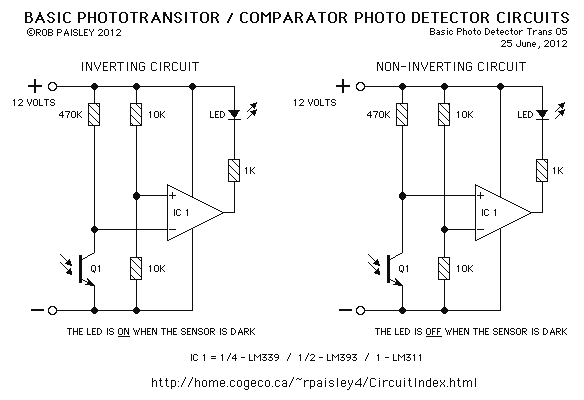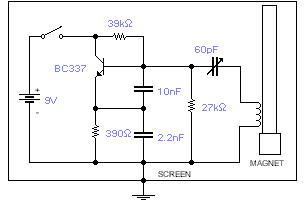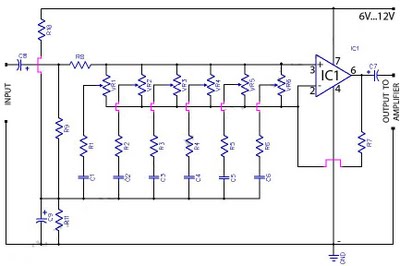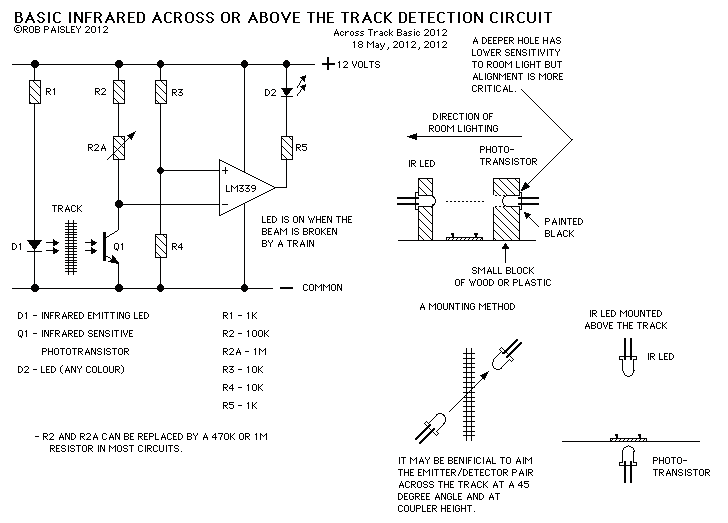
Light/Dark Detectors

This compact circuit is capable of distinguishing between light and darkness, making it highly beneficial for controlling the operation of signs, porch lights, or other devices in response to changing light conditions.
The circuit operates using a light-dependent resistor (LDR) as the primary sensing element. The LDR's resistance decreases with increasing light intensity, allowing it to serve as an effective sensor for ambient light levels. When the light level falls below a predetermined threshold, the circuit activates a switching mechanism to turn on connected devices such as lights or signs. Conversely, when the ambient light level rises above the threshold, the circuit deactivates the connected devices.
The schematic typically includes a power supply, an LDR, a resistor to form a voltage divider, and a transistor or relay for switching the load. The voltage across the LDR is monitored, and when it drops below a certain level, it triggers the transistor to conduct, thereby energizing the relay or directly powering the load. Additional components such as potentiometers can be incorporated to allow for adjustable sensitivity, enabling customization based on specific environmental conditions.
This circuit can be implemented in various applications, including automatic street lighting, garden lights, and indoor lighting systems, enhancing energy efficiency and convenience. Proper design considerations, such as component ratings and power supply requirements, are essential to ensure reliable operation in diverse lighting scenarios.This handy little circuit can tell the difference between darkness and light, making it very useful for switching on and off signs, porch lights or other things when it gets dark or light. 🔗 External reference
The circuit operates using a light-dependent resistor (LDR) as the primary sensing element. The LDR's resistance decreases with increasing light intensity, allowing it to serve as an effective sensor for ambient light levels. When the light level falls below a predetermined threshold, the circuit activates a switching mechanism to turn on connected devices such as lights or signs. Conversely, when the ambient light level rises above the threshold, the circuit deactivates the connected devices.
The schematic typically includes a power supply, an LDR, a resistor to form a voltage divider, and a transistor or relay for switching the load. The voltage across the LDR is monitored, and when it drops below a certain level, it triggers the transistor to conduct, thereby energizing the relay or directly powering the load. Additional components such as potentiometers can be incorporated to allow for adjustable sensitivity, enabling customization based on specific environmental conditions.
This circuit can be implemented in various applications, including automatic street lighting, garden lights, and indoor lighting systems, enhancing energy efficiency and convenience. Proper design considerations, such as component ratings and power supply requirements, are essential to ensure reliable operation in diverse lighting scenarios.This handy little circuit can tell the difference between darkness and light, making it very useful for switching on and off signs, porch lights or other things when it gets dark or light. 🔗 External reference





